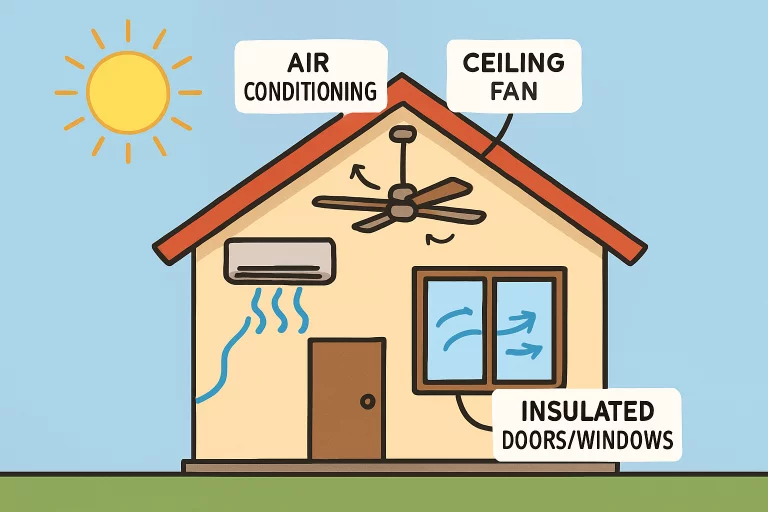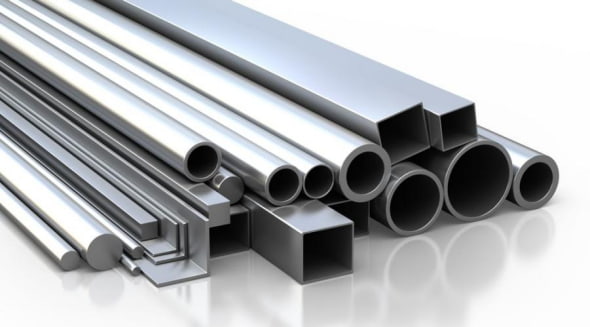Blog
The Unsent Project: Exploring the Power of Unspoken Words

We’ve all experienced moments where words linger on the tip of our tongues, heavy with emotion, yet remain unspoken. Whether it’s a confession of love, an apology, or a farewell, these unvoiced thoughts often leave a profound imprint on our hearts. The Unsent Project, a digital phenomenon and artistic movement, has become a sanctuary for these silenced emotions. By inviting people to share letters they’ve never sent, it unveils the raw, unfiltered power of words left unsaid—and why they matter. In this deep dive, we explore the origins, purpose, and emotional resonance of The Unsent Project, and how it illuminates the universal human experience of longing, regret, and healing.
What Is The Unsent Project?
Founded in 2016 by artist Rora Blue, The Unsent Project began as a creative experiment to explore the emotions tied to unexpressed feelings. Participants submit anonymous letters addressed to someone they’ve never fully confronted—a first love, a estranged family member, a lost friend, or even themselves. Each letter is categorized by the color the writer associates with the recipient, creating a sprawling mosaic of heartache, hope, and vulnerability.
What started as a small art installation has since evolved into a global digital archive, with over a million submissions from people in 200+ countries. The project’s website and social media platforms showcase these letters, transforming private confessions into a shared tapestry of human emotion. From poetic declarations to tearful goodbyes, The Unsent Project reveals how unspoken words shape our lives—and how releasing them can be both liberating and transformative.
The Psychology of Unspoken Words: Why Silence Haunts Us
Why do unsent letters hold such emotional weight? Psychologists point to the Zeigarnik Effect, a phenomenon where incomplete tasks—or unresolved emotions—linger in our minds more persistently than closed chapters. Unspoken words represent unfinished business, creating a loop of “what ifs” and “if onlys” that can fuel anxiety, regret, or even grief.
Dr. Emily Thompson, a clinical psychologist, explains:
“When we suppress emotions, they don’t disappear. They manifest as physical stress, mental fatigue, or relational distance. Writing unsent letters allows individuals to externalize these feelings, disrupting the cycle of rumination.”
The Unsent Project taps into this need for catharsis. By providing a judgment-free space to articulate hidden truths, it helps participants reclaim agency over their narratives.
The Healing Power of Unsent Letters
1. Emotional Release Without Consequence
One of the project’s most compelling aspects is its anonymity. Writers can express anger, guilt, or vulnerability without fear of judgment or retaliation. For survivors of trauma or toxic relationships, this safe outlet is invaluable. A letter titled “To My Father Who Never Stayed” poignantly captures this:
“I spent years waiting for you to choose me. Now, I’m choosing to let go.”
2. Reframing Regret
Many letters reflect regret—missed opportunities, unspoken apologies, or love never confessed. Yet, writing these words helps participants reframe regret as acceptance. As one submission reads:
“I used to hate myself for not telling you how I felt. Now, I realize silence was my survival.”
3. Connecting Through Shared Vulnerability
Reading others’ letters reminds us we’re not alone. A teenager’s plea to a lost friend resonates with a parent grieving a miscarriage; a LGBTQ+ individual’s letter about hiding their identity echoes the struggles of countless others. This collective vulnerability fosters empathy and connection in an increasingly fragmented world.
The Unsent Project and Mental Health: A Tool for Healing
Mental health experts increasingly recognize expressive writing as a therapeutic tool. Studies by Dr. James Pennebaker, a pioneer in this field, show that writing about emotional experiences improves immune function, reduces stress, and enhances emotional clarity. The Unsent Project aligns with these findings, offering a structured yet creative way to process pain.
For example, a 2022 survey of Unsent Project participants found:
- 78% felt “emotional relief” after submitting a letter.
- 64% reported improved clarity about their feelings.
- 52% took steps toward reconciliation or closure afterward.
These numbers underscore the project’s role not just as art, but as a catalyst for personal growth.
How to Participate: Writing Your Own Unsent Letter
Ready to explore your own unspoken words? Here’s how to engage with The Unsent Project:
- Reflect on Your Emotions: Identify the person or situation that weighs on your mind. What do you wish you’d said?
- Write Freely: Don’t self-censor. Let your thoughts flow without worrying about grammar or logic.
- Choose a Color: Pick a hue that symbolizes the recipient (e.g., red for passion, blue for calm, black for grief).
- Submit Anonymously: Visit theunsentproject.com to share your letter.
- Explore Others’ Stories: Read through the archive to find solace in shared experiences.
The Cultural Impact: Why the World Needs Projects Like This
In an era of curated social media personas and superficial connections, The Unsent Project is a radical act of authenticity. It challenges the notion that vulnerability is weakness, instead celebrating it as a source of strength. Its popularity also reflects a growing cultural shift toward prioritizing mental health and emotional honesty.
Moreover, the project’s visual component—color-coded letters displayed like a digital quilt—turns pain into art. Each submission is a brushstroke in a larger portrait of humanity, reminding us that beauty can emerge from brokenness.
Conclusion: The Courage in Letting Go
The Unsent Project is more than an archive of letters; it’s a testament to the resilience of the human spirit. By giving voice to silenced emotions, it empowers individuals to confront their past, heal their present, and reclaim their future. Whether you contribute a letter or simply bear witness, the project invites us all to reflect on the words we carry—and the transformative power of setting them free.
Blog
How to Keep Your Air Conditioner Running Efficiently All Summer

Key Takeaways:
- Frequent maintenance, including timely filter changes and regular coil cleaning, significantly enhances your air conditioner’s efficiency and longevity.
- Using smart or programmable thermostats, along with ceiling fans, can help reduce energy consumption without sacrificing comfort.
- Properly sealing windows, doors, and ductwork and boosting your home’s insulation prevents cool air from leaking and keeps your system from overworking.
- Annual professional inspections are crucial for spotting and addressing potential issues early, ensuring your AC stays in peak condition throughout the summer.
As summer temperatures climb and heat waves roll in, your air conditioner can become an oasis of relief. However, the increased demand for cooling can also strain your system, leading to higher energy bills and potential breakdowns. Ensuring efficient AC operation is essential for your comfort and keeping expenses under control as the mercury rises. With a combination of preventative maintenance, intelligent usage habits, and simple upgrades, you can extend the life of your AC and cut back on costly repairs. Whether you’re unsure if your current air conditioning setup can handle the summer workload or want to keep things running at peak efficiency, now is the time to take action. Small changes, such as adjusting your routine and focusing on key maintenance tasks, can make a remarkable difference in how well your home stays cool, all while keeping energy costs in check.
Regularly Replace or Clean Air Filters
The cornerstone of efficient air conditioning is a clean and unobstructed air filter. Over time, filters become clogged with dust, pollen, allergens, and even pet hair, a situation that causes your system’s airflow to decrease, forcing it to compensate by running longer and harder. This drives up energy usage and contributes to poor indoor air quality, which can aggravate allergies and respiratory issues. Experts strongly advise checking your air filter monthly during peak use periods, such as mid-summer when your AC is running constantly. Depending on your household and local air quality, filters may need to be replaced or cleaned every 1 to 3 months. Clean filters protect your investment by reducing wear and tear, improving overall efficiency, and maintaining healthier indoor air for your family.
Keep the Outdoor Unit Clean and Unobstructed
Your AC’s outdoor condenser unit is vital to heat transfer, and keeping it clear of obstructions is essential for proper operation. Unfortunately, these units are frequently subjected to debris buildup, including fallen leaves, overgrown shrubs, dirt, and even trash that the wind carries. When the condenser is surrounded by clutter or its coils are coated with grime, it can no longer expel heat efficiently, resulting in your system struggling and possibly overheating. Whether it’s part of a new air conditioning installation or regular maintenance, providing at least two feet of open space around the unit ensures free-flowing air. Periodically trim nearby vegetation and regularly inspect the unit after storms or heavy winds. Gently use a garden hose to rinse away dirt from the coils (with the system powered off), taking care not to bend the delicate fins. Routine outdoor cleaning allows your air conditioner to cool more efficiently and reduces the risk of mechanical failure due to overheating.
Utilize a Programmable or Smart Thermostat
Modern thermostats—especially programmable and smart models—offer powerful tools for regulating your home’s climate while minimizing wasted energy. With programmable thermostats, you can create automatic temperature settings that fit your daily routine, enabling your AC to run less during daytime hours when the house is empty and to cool down before you return. Smart thermostats elevate this control with Wi-Fi connectivity and the ability to learn your preferences. Many can even be adjusted remotely from your smartphone and will recommend energy-saving adjustments over time. Ultimately, fine-tuning your cooling schedule with these advanced devices can translate into significant savings on your monthly energy bills without sacrificing comfort. Consider upgrading for convenience and the potential to reduce wear on your air conditioner and save money year after year.
Seal Air Leaks and Insulate Your Home
One of the most frequent—and costly—sources of inefficiency is escaping conditioned air through gaps and cracks in your home. Windows and doors that don’t close tightly, poorly sealed attic openings, and leaky ductwork allow cooled air to seep outdoors, meaning your AC must operate longer and harder to maintain the desired temperature. Start by weather-stripping or caulking around windows and exterior doors to minimize air leaks. Insulating attic floors, crawl spaces, and exposed ductwork helps trap cool air indoors and reduces cooling costs. Don’t overlook the ducts; according to the U.S. Department of Energy, up to 30% of airflow can be lost through leaky ducts in the average home. Sealing these connections can yield some of the greatest gains in comfort and efficiency for your entire house.
Use Ceiling Fans to Enhance Air Circulation
Ceiling fans offer an easy, low-cost way to make your living spaces feel cooler and help your AC work less. By circulating air, fans create a gentle breeze that increases evaporative cooling on your skin, making it possible to set your thermostat a few degrees higher—sometimes as much as four degrees—without feeling the difference in comfort. Make sure your fans rotate counterclockwise during the summer months to push cool air down, and remember to turn fans off when you leave the room to save even more energy. Because fans use only a fraction of the electricity required by air conditioning, they’re a smart supplement that can extend the life of your system and lower your energy bills with every use.
Schedule Professional Maintenance
While ongoing homeowner care is essential, there’s no substitute for an HVAC professional’s comprehensive inspection and tune-up. Annual maintenance visits cover many vital tasks beyond basic DIY routines. A technician will thoroughly inspect and clean the evaporator and condenser coils, ensuring optimal heat transfer and uncovering problems like corrosion or leaks. They’ll also measure refrigerant levels, check for leaks, and refill or top up as necessary so your system cools at maximum efficiency. Professionals test all electrical components, calibrate your thermostat, and ensure every moving part is lubricated and working smoothly. Early detection of wear, loose wires, or declining performance can prevent sudden breakdowns that leave you sweating.
Optimize Thermostat Settings
Proper thermostat settings are key to balancing comfort and energy savings. The U.S. Department of Energy recommends setting your thermostat to 78°F (26°C) when you’re home and awake, then raising it when you’re asleep or away. Even a modest increase—just one degree—can shrink your cooling bill by up to 3%. Experiment with your comfort level and use fans to help tolerate slightly higher temperatures. The less your AC must run, the more you’ll benefit from both cost savings and reduced wear on your equipment, translating to fewer repairs and a longer system lifespan.
Avoid Heat Buildup During the Day
In addition to smart cooling, controlling indoor heat sources can give your AC a much-needed break. Everyday activities such as cooking on the stove, baking in the oven, or running the clothes dryer and dishwasher introduce significant heat into your home, forcing your cooling system to work overtime. Aim to use these appliances during cooler morning or evening hours. Switching to grilling outdoors or microwaving meals can make a noticeable difference during hot afternoons. Additionally, keep sunlight out by closing blinds, shades, or curtains in sun-facing rooms—this simple habit prevents solar heat gain and lightens the load on your air conditioner.
Blog
From Strength to Flexibility: How Alloy Composition Impacts Steel Behavior

Steel, at its core, is an alloy composed of iron and carbon, with the carbon content typically less than 2% by weight. However, what differentiates one steel from another is not just this foundation, but the addition of other elements and the precision of their ratios. Beyond raw composition, how steel is processed—through heating, cooling, and mechanical work—significantly impacts its ultimate properties and behavior. Metallurgists have spent generations uncovering why certain combinations deliver the toughness needed for skyscrapers or the pliability necessary for springs.
The basic mixture can be transformed dramatically by tweaking the types and amounts of alloying elements. For instance, industrial fields rely on various specialty steels to meet demanding performance and safety standards. Engineers who require reliable performance under stress and flexibility during fabrication often turn to 4140 alloy steel. This particular alloy is known for striking a balance between strength, toughness, and versatility. Different industries, from aerospace to construction, select alloys with distinct proportions of elements, each of which fine-tunes steel’s capabilities for specific challenges such as resisting wear, enduring high temperatures, or combating corrosion.
The Role of Alloying Elements
Steel’s versatility stems from the addition of various alloying elements. For example, chromium enhances corrosion resistance, manganese increases hardness, nickel improves ductility, and molybdenum boosts strength at high temperatures. Even small adjustments in these elements can lead to significant changes in steel’s properties, allowing for customization based on specific applications. This field is continually evolving, with designers utilizing the latest research to refine steel at the microscopic level.
Balancing Strength and Flexibility
Steel’s performance involves balancing strength and ductility, often requiring a trade-off between the two. High carbon content enhances hardness but can lead to brittleness, increasing the risk of shattering under pressure. Metallurgists modify alloying elements such as nickel and vanadium to improve toughness, making steel suitable for applications like automotive parts and pipelines. Engineers design alloys for strength and flexibility, which is essential for structures like earthquake-resistant skyscrapers and bridges.
Alloy Steel In Everyday Use
Alloy steels are central to modern life, ensuring the durability and safety of infrastructure and products. In civil engineering, high-strength, low-alloy steels support bridges and skyscrapers, balancing load support with flexibility for weather or seismic changes. Public transit, freight trains, and playgrounds depend on these steels for safety, longevity, and ease of maintenance.
Stainless steels with chromium resist corrosion and contamination in specialized settings like hospitals and food services. Steel alloys for tools and sports gear offer resilience, lightness, and wear resistance, powering bicycle shocks and wind turbines.
Why Microstructure Matters
The microstructure of steel—like grains, phases, and precipitates formed during solidification and heat treatment controls key properties. Even with the same chemical composition, steels can have different mechanical traits due to cooling, rolling, or tempering variations. Heat treatments determine whether steel becomes soft pearlite, hard martensite, or a mix, each with unique characteristics. Advances in understanding and manipulating microstructure have driven significant progress in steel technology. Researchers now design superelastic and nano-grained steels with impressive strength and flexibility. These innovations set new standards for high-performance medical devices, robotics, and energy infrastructure by creating lighter, more robust, and adaptable materials.
Emerging Trends in Steel Development
Recent years have emphasized scalability, sustainability, and performance in steel manufacturing. Environmental concerns drive the development of alloys that are lightweight and durable. Nano-structured steels, engineered at the atomic level, help industries reduce waste and energy use while improving material performance. Efforts also focus on creating steel for extreme environments like aerospace—lightweight and fatigue-resistant—or for oil and gas, where high pressure and corrosion are standard. New alloys are designed for electric vehicles, renewable energy, and advanced construction, promoting efficiency, sustainability, and strength.
Blog
Future-Proofing Commercial Buildings with Smart Construction Practices

Changing Demands for Modern Commercial Spaces
Commercial building designs have transformed dramatically over the past decade, reflecting global work trends and the necessity for more adaptable and health-conscious environments. Today’s tenants seek flexible, future-ready spaces that accommodate work-from-anywhere policies, on-site wellness initiatives, and seamless connectivity. Owners and developers must keep pace, not just responding to what tenants want but anticipating how those needs will evolve in five or ten years. Choosing forward-thinking construction partners like Guaranteed Contractors is a strategic advantage. These specialists apply experience and innovative planning to create environments prepared for shifting workplace culture, fluctuating occupancy levels, and ever-changing safety protocols.
Flexibility has emerged as both a demand and an opportunity. Spaces that can be quickly reconfigured, resized, or repurposed make commercial real estate more valuable in fast-changing markets. Many developers now view smart technology investments as critical tools for delivering this adaptability while keeping operational costs low, especially during uncertain economic periods. These innovations are increasingly the foundation for resilient, attractive properties that stand out to long-term tenants.
Core Principles of Smart Construction
At the heart of any successful innovative construction project lies the seamless marriage of technology with intentional design. Modern commercial buildings are protected shells and interactive platforms where the core infrastructure can sense, learn, respond, and evolve. Five main pillars support this next-generation approach:
- Smart system integration — Centralized control systems seamlessly manage lighting, HVAC, security, and building access. This coordinated infrastructure allows facility managers to adjust comfort levels or respond to emergencies with just a few clicks, improving operational efficiency and tenant comfort.
- Connectivity — High-speed, building-wide wireless networks support diverse devices and sensors, generating constant data about building performance and occupant needs. This real-time intelligence lets managers optimize energy use and predict potential issues before they cause disruptions.
- Flexible layouts — Smart spaces are designed from the ground up to accommodate evolving floor plans, modular furnishings, and movable walls. This level of adaptability ensures a building remains marketable whether the tenant is a creative startup, a call center, or a medical practice.
- Security and privacy — Next-gen surveillance, access control, and cybersecurity protocols work together to secure the physical and digital spaces within a building. They foster tenant trust, which is crucial as more business processes move online.
- Sustainability — Environmentally conscious choices are integral to modern construction. These include solar readiness, efficient climate control, and water-saving features that create measurable benefits for owners and occupants.
Integrating these principles from concept through execution is crucial for buildings to be truly “future-proof” and competitive in any market landscape.
Advances in Energy and Building Technology
New technologies are bringing a revolution to how buildings use and manage energy. Smart meters track real-time electricity, gas, and water use, enabling immediate adjustments to eliminate waste. Cloud-based controls link every light and HVAC vent to a central dashboard, allowing fine-tuned scheduling and monitoring from a smartphone or command center. Even daylight harvesting—automatically adjusting artificial lighting levels based on sunlight—is becoming mainstream, enhancing occupant comfort while cutting costs.
Air quality and comfort control systems are now responsive, using occupancy sensors, carbon dioxide monitors, and temperature detectors to ensure the healthiest, most productive indoor environments. Major studies show that buildings employing these energy management technologies can achieve remarkable reductions in energy consumption, often upwards of 20% to 30%. This is not for the bottom line, butigns commercial assets with urgent global climate goals and increasingly stringent building performance standards.
Sustainability: Building for Tomorrow
In the current construction landscape, sustainability is as much a competitive edge as a social duty. Green construction goes far beyond recycling bins—using high-performance insulation, triple-pane windows, and low-impact flooring materials to reduce emissions and improve durability. Intelligent irrigation systems, water recapture units, and even green roofs are being integrated into commercial sites to offset resource use further and boost building longevity.
Environmental certifications like LEED, WELL, and Energy Star aren’t just public relations talking points. These accreditations attract sustainability-minded tenants, unlock government incentives, and can even reduce insurance premiums. Over the long term, they help commercial properties outperform peers on utility expenditure, tenant recruitment, and reputation, creating cyclical value that extends to every stakeholder.
Cutting Costs and Boosting Value through Smart Solutions
From a business perspective, the financial benefits of innovative construction can be substantial. Connected controls allow asynchronous heating and cooling based on occupancy, reducing waste in unused areas and extending the life of expensive systems. Automated alerts enable facility teams to catch and fix issues—such as water leaks or temperature anomalies—before they generate costly repairs or disrupt tenant business operations.
Commercial real estate outfitted with high-tech infrastructure consistently commands higher rents and experiences lower turnover. As data-driven solutions become the norm, properties with well-executed innovative systems will also see improved insurance evaluations and greater appeal to forward-thinking investors. Ultimately, adopting innovative solutions is a pragmatic way to future-proof not just the structure, but also the business model behind any commercial property.
Case Study: Real-World Example of a Smart Building Upgrade
Consider a mid-century office tower in a bustling downtown business district. The building owner invested in a transformative retrofit when facing declining occupancy and rising utility costs. New networks of sensors connected to centralized software allowed real-time control over lighting, HVAC, and even elevator operation. The project team also installed automated air quality monitoring to maintain optimal environments—a massive win for health-conscious tenants.
Within the first year of operation, the building’s total energy consumption dropped by 25%, and tenant satisfaction surveys showed a marked increase in comfort and convenience. Tenants noted improved lighting quality, faster response times for maintenance tickets, and better quality. The building became a destination of choice in its neighborhood, attracting technology-driven organizations drawn to modern amenities and sustainable design.
Why Collaboration Matters in Smart Construction
The complexity and sophistication of modern innovative building projects demand real teamwork across roles and disciplines. Architects, engineers, IT specialists, contractors, and maintenance teams can collaborate openly from the earliest planning stages. Early-phase workshops, digital modeling, and frequent feedback loops keep the entire team on the same page and help manage evolving expectations efficiently.
Crucially, involving end-users—such as facility managers and tenants—leads to more brilliant, practical technology choices. Their insights drive user-friendly installations, intuitive controls, and spaces that cater to real organizational needs. By focusing on collaboration, teams create buildings resilient to technological change and shifts in how people work and interact within shared spaces.
Future Trends: What’s Next for Commercial Buildings?
The next era of commercial construction is poised to bring even greater changes. Artificial intelligence will refine how building systems predict and respond to daily patterns, from finely tuned heating and lighting adjustments to real-time occupancy tracking. Resilience to technological change and reality for remote troubleshooting are now appearing in leading developments, offering cost savings and improved safety.
Digital twins—sophisticated 3D models that mirror every physical characteristic of a structure—will enable property teams to simulate scenarios, manage assets, and plan upgrades virtually, significantly improving decision-making and predictive maintenance. Industry standards are moving toward more open, interoperable platforms, allowing seamless upgrades as new technologies become available. Staying informed about these trends and working with teams dedicated to innovation is the surest way to ensure each building delivers long-term value for owners and those working inside.
By embracing innovative construction and emphasizing adaptive, collaborative strategies, businesses and developers will create the next generation of commercial spaces that promote comfort, wellness, efficiency, and sustainability in equal measure.
-

 Technology3 months ago
Technology3 months agoRevealed: 8093642079 – Find Out Who’s Behind the Number
-

 Technology6 months ago
Technology6 months agoRaterpoint: Revolutionizing Online Content Evaluation and Feedback
-

 Entertainment6 months ago
Entertainment6 months agoFappelo: How to Engage with This Exciting New Phenomenon
-

 Blog6 months ago
Blog6 months agoBunkralbum: What You Need to Know About This Intriguing Concept
-

 Blog6 months ago
Blog6 months agoRemove Bleedthrough in IrfanView: Effectively Remove Your Images
-

 Entertainment6 months ago
Entertainment6 months agoWWE SmackDown Episode 1491 Recap: Who Emerged Victorious?
-

 Blog6 months ago
Blog6 months agoBebasinindo: A Comprehensive Guide to Its Origins and Significance
-

 Blog6 months ago
Blog6 months agoMyWape: Tips and Tricks for New Users
